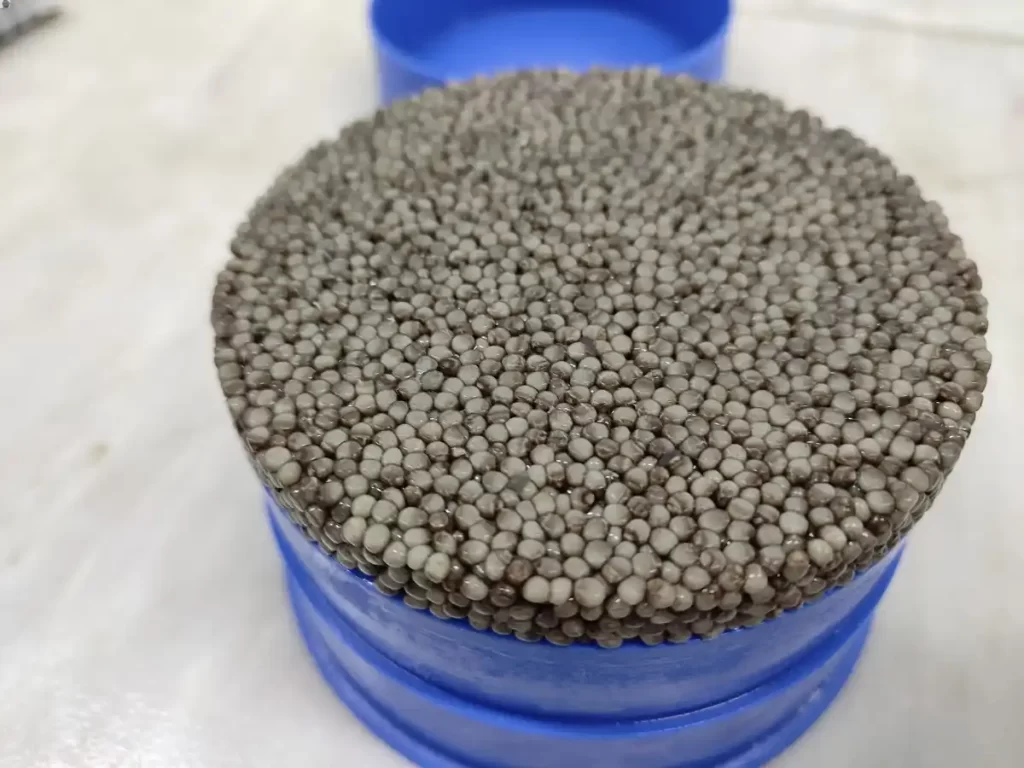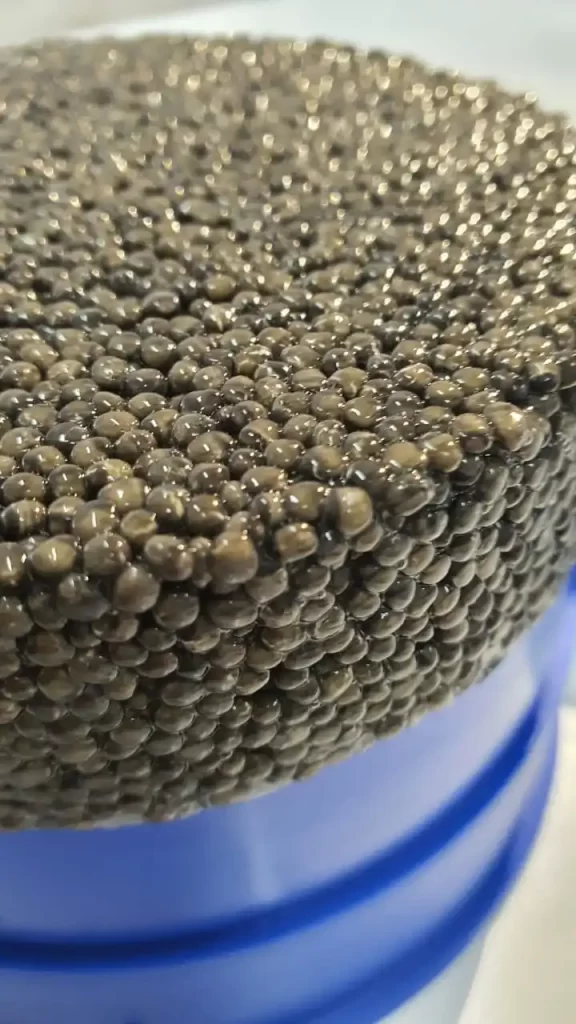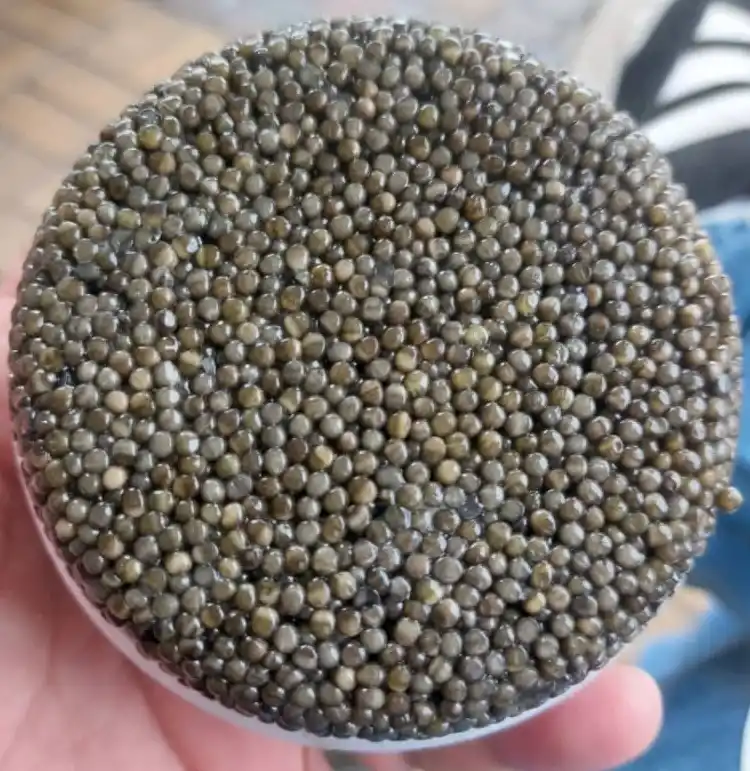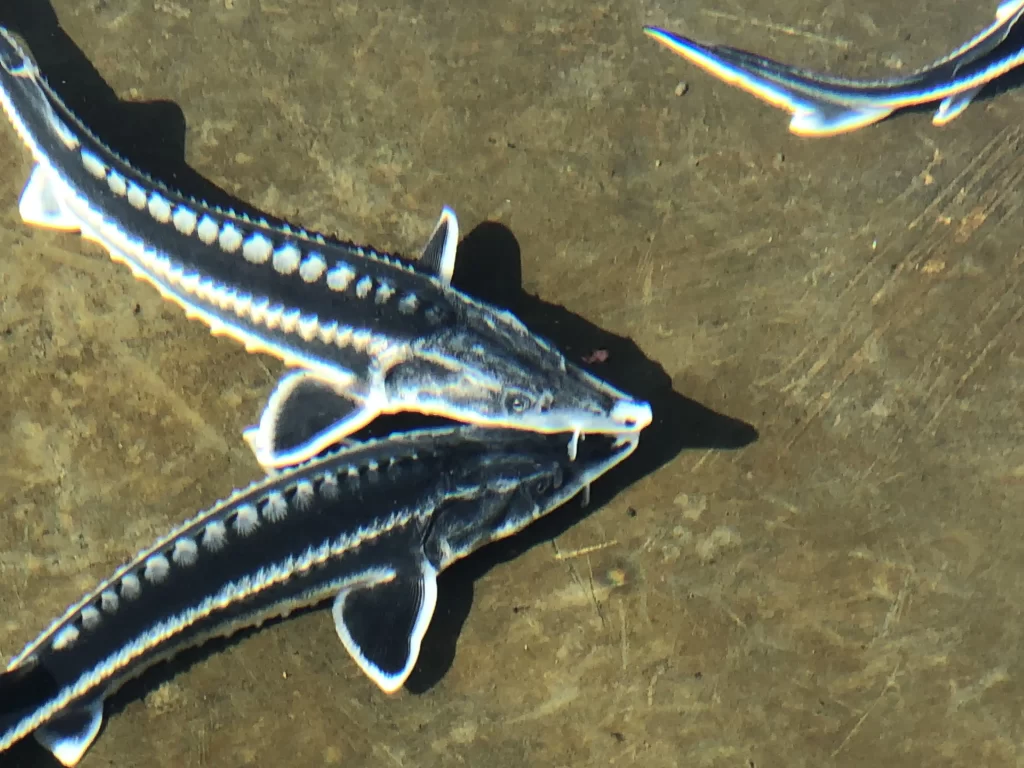Introduction to Caviar-The beginner’s guide to caviar

Iranian beluga caviar is a well-known delicacy that has long been associated with luxury. In the realm of fine dining, caviar, which is prepared from roe (eggs) of various species of sturgeon, is highly valued.
Due to its rich taste, delicate texture and excellent presentation, Beluga Caviar 30g is a highly sought after option for special occasions and fine dining experiences.
Caviar is highly sought after due to its exclusivity and rarity. The extraordinary value and attractiveness of caviar is the result of the painstaking process that is carried out in its harvesting and processing. Every step of the caviar production process involves skill and attention to detail, from the careful selection of sturgeon species to the timely extraction of roe.
To know more about The Beluga Huso huso-extraction and production, refer to the article we have published with the same name.
Caviar, which is the pinnacle of elegance and complexity, is available in many varieties, each of which has different flavors and qualities. Everything from beluga eggs to delicate oysters and colorful sevruga and baeri. Sophisticated palates have a wide variety of options in the realm of caviar. Let’s examine the different types of caviar and learn about their unique characteristics:
beluga eggs:
Known as the king of caviar, beluga eggs is renowned for its large, lustrous pearls and buttery texture. Sourced from the beluga eggs, it is characterized by its subtle flavor profile with hints of butter, nut, and oceanic notes. beluga eggs is exceptionally rare and highly sought after, making it the ultimate indulgence for caviar enthusiasts.

Baeri caviar:
One of the most sought-after varieties of caviar is Baeri caviar, also known as Siberian caviar. This exquisite delicacy originates from the Siberian sturgeon (Acipenser baerii) and has gained significant popularity among caviar connoisseurs.

Let’s delve into the captivating world of Baeri caviar:
Baeri Caviar Characteristics: Baeri caviar is renowned for its medium to large-sized grains that range in color from dark gray to black. The texture is often described as firm and velvety, providing a satisfying mouthfeel. Its flavor profile is exceptional, combining a delicate brininess with subtle nutty and buttery undertones.
Osetra Caviar:
Ossetra caviar, derived from the Ossetra sturgeon, is treasured for its medium to large-sized eggs and rich, nutty flavor. Its color can vary from golden to dark brown, with a shimmering appearance that adds to its visual appeal. Ossetra caviar offers a complex taste profile, combining buttery and nutty flavors with subtle hints of sea salt.

Sevruga Caviar:
Sevruga caviar comes from the Sevruga sturgeon and is known for its small, delicate eggs and robust flavor. It exhibits a more pronounced briny taste with a hint of earthiness, making it an excellent choice for those seeking intense flavors. Sevruga caviar’s smaller size adds a delightful pop and texture to the palate.
Sterlet Caviar:
Sterlet caviar is derived from the Sterlet sturgeon, a smaller species native to the Caspian Sea. Its eggs are small and have a delicate flavor reminiscent of fresh, clean oceanic notes. Sterlet caviar is prized for its refined taste and is considered a gourmet choice among caviar aficionados.
Hackleback Caviar:
Hackleback caviar, also known as American sturgeon caviar, hails from the United States. It features small, jet-black eggs with a smooth texture and a robust, buttery flavor. Hackleback caviar offers a unique alternative to traditional Caspian caviar, providing an exquisite taste experience.
Salmon Roe:
While not classified as true caviar, salmon roe is a popular and accessible option for caviar enthusiasts. It showcases vibrant orange eggs with a distinctive pop and a slightly sweet, briny flavor. Salmon roe adds a burst of color and flavor to various culinary creations and is often used as a garnish or in sushi preparations.
Each type of caviar possesses its own allure, reflecting the characteristics of the sturgeon species and the specific environmental conditions in which they are harvested. Whether you prefer the luxurious indulgence of beluga eggs or the nuanced flavors of Ossetra and Sevruga, exploring the world of caviar allows you to embark on a gastronomic journey filled with elegance, refinement, and extraordinary taste.

history of caviar:
Caviar, known for its luxurious and indulgent nature, holds a fascinating history that spans centuries. Its origins can be traced back to ancient times, where it was revered as a delicacy by various cultures around the world.
The story of caviar begins with the discovery of sturgeon, a prehistoric fish that has inhabited Earth’s waters for millions of years. Sturgeon were abundant in many rivers and seas, including the Caspian Sea, the Black Sea, and the rivers of Europe and North America.
The consumption of sturgeon eggs, which we now know as caviar, dates back to ancient Persia (modern-day Iran), where it was enjoyed by royalty and the elite. The Persians held sturgeon in high regard and considered their eggs a symbol of wealth and prestige.
As trade routes expanded, caviar gained popularity among neighboring regions and countries. The delicacy became highly sought-after in Russia, where it became a staple in the diets of the Russian tsars and aristocracy. Sturgeon populations in the Caspian Sea flourished, providing an abundant supply of caviar.

In the late 19th and early 20th centuries, caviar reached its peak of popularity. It became synonymous with luxury and was highly regarded by the upper classes in Europe and the United States. iranian caviar, particularly from the Beluga, Osetra, and Sevruga sturgeon species, was in high demand.
However, overfishing and unsustainable harvesting practices led to a significant decline in sturgeon populations worldwide. This, coupled with pollution and habitat destruction, resulted in stricter regulations and a decline in the availability of wild caviar.
To combat the decline, sturgeon aquaculture (fish farming) emerged as a sustainable alternative to wild harvesting. Caviar farms were established in various countries, including France, Italy, and the United States, to breed sturgeon and produce high-quality caviar in a controlled environment.
Today, caviar continues to captivate food enthusiasts and connoisseurs worldwide. While wild caviar remains highly prized, the availability of farm-raised caviar has made this exquisite delicacy more accessible to a broader audience.
The history of caviar is a testament to its enduring allure and the efforts to preserve sturgeon populations for future generations. As we savor the delicate pearls of caviar, we not only indulge in a culinary treasure but also pay homage to a tradition that has stood the test of time.
FAQ:
What is the history of beluga eggs?
beluga eggs has a rich history that dates back centuries. It originated in the Caspian Sea region, particularly in countries like Iran and Russia. Beluga sturgeon, the source of beluga eggs, were abundant in these waters and were highly valued for their prized eggs.
When did beluga eggs gain popularity?
beluga eggs gained popularity in the late 19th and early 20th centuries. It became synonymous with luxury and was highly sought-after by the European and Russian elite. Russian tsars and aristocracy were particularly fond of beluga eggs.
How was beluga eggs traditionally harvested?
Traditionally, beluga eggs was harvested by catching wild Beluga sturgeon from the Caspian Sea. The fish were carefully caught, and their eggs were extracted by skilled fishermen. This traditional harvesting method contributed to the exclusivity and prestige associated with Beluga caviar.
How did overfishing affect beluga eggs production?
Overfishing and unsustainable harvesting practices led to a significant decline in Beluga sturgeon populations. The high demand for beluga eggs coupled with limited regulations resulted in the depletion of this prized species. As a result, strict measures were implemented to protect Beluga sturgeon and conserve their populations.







